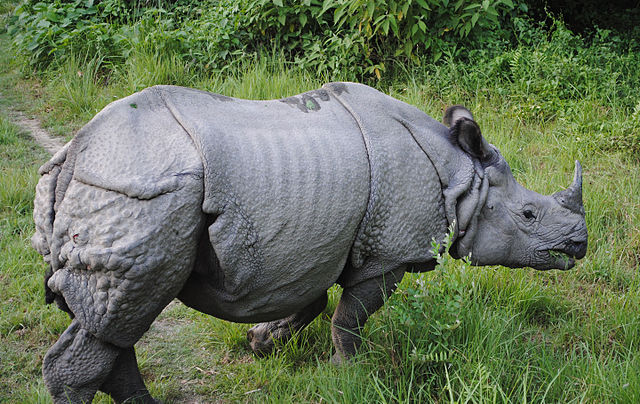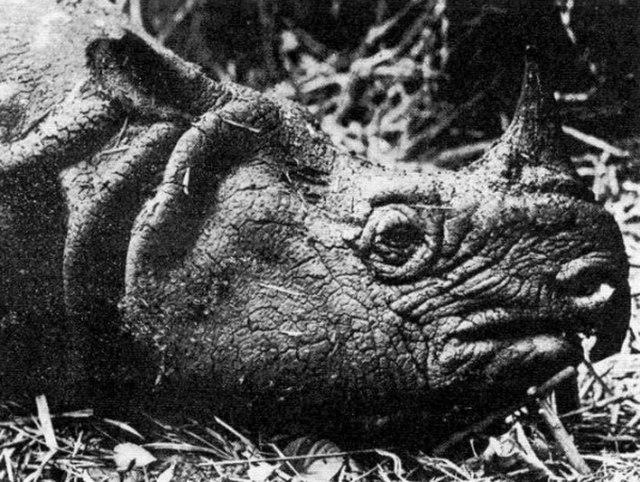The Sumatran rhinoceros, also known as the Sumatran rhino, hairy rhinoceros or Asian two-horned rhinoceros, is a rare member of the family Rhinocerotidae and one of five extant species of rhinoceros; it is the only extant species of the genus Dicerorhinus. It is the smallest rhinoceros, although it is still a large mammal; it stands 112–145 cm (44–57 in) high at the shoulder, with a head-and-body length of 2.36–3.18 m and a tail of 35–70 cm (14–28 in). The weight is reported to range from 500–1,000 kg (1,100–2,200 lb), averaging 700–800 kg (1,540–1,760 lb). Like both African species, it has two horns; the larger is the nasal horn, typically 15–25 cm (5.9–9.8 in), while the other horn is typically a stub. A coat of reddish-brown hair covers most of the Sumatran rhino's body.
Sumatran rhinoceros
First drawing of the first specimen known to Western science, by William Bell, 1793
Skeleton of the Sumatran rhinoceros
Sumatran rhinoceros at the Cincinnati Zoo in Cincinnati, Ohio
A rhinoceros, commonly abbreviated to rhino, is a member of any of the five extant species of odd-toed ungulates in the family Rhinocerotidae; it can also refer to a member of any of the extinct species of the superfamily Rhinocerotoidea. Two of the extant species are native to Africa, and three to South and Southeast Asia.
The white rhinoceros is actually grey.
The black rhinoceros has a beak shaped lip and is similar in color to the white rhinoceros.
The Indian rhinoceros has a single horn.
Smaller in size than the Indian rhinoceros, the Javan rhinoceros also has a single horn.








